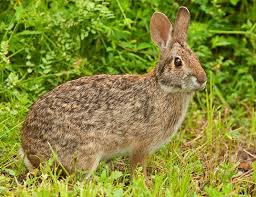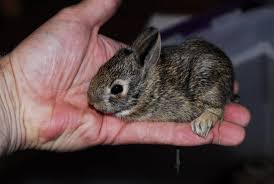Everything You Need To Know About Marsh Rabbit
While most rabbits flee at the mention of water, the Marsh Rabbit is a very different breed. They spend their entire lives in, on, or near water and are native to wet habitats in the Carolinas. As a result, these “swamp rabbits” have a unique place in Appalachian culture, distinguishing them even from other wild rabbit breeds.
Marsh rabbit, also known as their scientific name Sylvilagus Palustris is a unique breed of rabbit. Sylvilagus Palustris obtained from the words silva, which means forest and lagos, while marshes mean hare and palustris. Even though this rabbit is usually associated with swamp rabbits, it should not confuse more giant swamp rabbits from Texas.
Almost every domesticated rabbit breed known today descended from a wild European rabbit. However, all wild rabbits in North America fell from a Cottontail as a common ancestor – including the Marsh Rabbit. The Marsh Rabbit is a rare subspecies of wild rabbits found in North America.
It is native to the Southeast corner of the United States. When European settlers first arrived in North Carolina, they met with hostility taken aback by discovering a rabbit that behaved very differently from the rabbits they knew back home. These Marsh rabbits preferred to go out only at night and were frequently seen swimming and bathing contentedly.
Does Marsh Rabbit make good pets?
 Even though Marsh Rabbit is a species of rabbit, they cannot be kept as a pet because they are wild animals. However, if we want to care for and guide a marsh rabbit, we can volunteer at a local zoo or animal shelter.
Even though Marsh Rabbit is a species of rabbit, they cannot be kept as a pet because they are wild animals. However, if we want to care for and guide a marsh rabbit, we can volunteer at a local zoo or animal shelter.
The reason why they cannot keep a pet is that they live in the wild. These creatures live in marshes and a few meters deep burrows. These Marsh rabbits also spend a lot of time near the water, mostly looking for food and hiding from predators.
Although it is a wild animals, marsh rabbits can buy from a breeder or a retailer selling captive or domesticated pets. We should never capture a wild rabbit in the wild to keep as a pet. Still, the price of marsh rabbits will vary depending on gender, size, coat quality, color, and appearance.
What does Marsh Rabbit eat?
 Marsh Rabbits are herbivorous, meaning they eat plants. Like most rabbits, these rabbits feed on leaves, plants, and marsh plant bulbs, including brushes, grasses, and cattails. In addition, they consume all plant parts, including roots, bark, seeds, weeds, flowers, and leaves.
Marsh Rabbits are herbivorous, meaning they eat plants. Like most rabbits, these rabbits feed on leaves, plants, and marsh plant bulbs, including brushes, grasses, and cattails. In addition, they consume all plant parts, including roots, bark, seeds, weeds, flowers, and leaves.
Other aquatic plants in its diet include marsh pennywort, water hyacinth, and wild potato. It can eat commercially prepared rabbit food, vegetables, seeds, nuts, and fruits if kept in captivity, but we can also provide food from its natural environment. Also, these Marsh Rabbits can consume fruits and vegetables as they can eat commercially prepared pellets or rabbit food in captivity, which contain nutrients beneficial to our pet’s health.
How giant is Marsh rabbit?
Their size is not as large as that of the eastern cottontail. Rabbits in the Florida region weigh 2.2-2.6 pounds or 1 to 1.18 kg. This region’s rabbits are no longer than 17 inches (43 cm) long. These subspecies of rabbits from the mainland now weigh no more than 3.5 pounds and measure 17.5 inches in length. Its hind feet are 3.6 inches long, which is longer than Florida’s subspecies’ hind feet, which are 3.5 inches long.
Is Marsh Rabbit aggressive?
 Marsh Rabbits, like other rabbits, can become territorial when kept in a small enclosure. Males can be aggressive and potentially dangerous to other males during the breeding season. To fight for dominance, the aggressive males can injure other males inside the cage.
Marsh Rabbits, like other rabbits, can become territorial when kept in a small enclosure. Males can be aggressive and potentially dangerous to other males during the breeding season. To fight for dominance, the aggressive males can injure other males inside the cage.
Despite this fact, some rabbit owners claim that their pets recognize them and can tell whether they are handled by their owners, strangers, or others. They may even appear fearful and refuse to be held by strangers. Thus, we can see that they became aggressive to strangers instead of their owners.
What’s the average lifespan of a Marsh Rabbit?
A swamp rabbit population’s members all breed around the same time (synchronous breeding). The breeding season typically lasts from February to August. Females can have up to six offspring. They build grass and twig nests in a depression on the ground beneath a brush pile or log.
Then, after four to seven days, newborns’ eyes open. After about two weeks, the young leave the nest. Finally, after 23 weeks, swamp rabbits reach sexual maturity. The majority of females have two to three liters per year. Few studies have been undertaken to explore the swamp rabbit’s lifespan, but it is estimated that they have an average lifespan of 1.8 years and can live for up to nine years.
How fast does Marsh Rabbit grow?
Marsh Rabbits breed from February to September, but they are not found in the wild nocturnal have been observed producing all year in southern Florida. They have 3 to 4 litters per year and give birth to 2 to 5 young after a 28-37-day gestation period. Young rabbits are helpless at birth, but they overgrow and are weaned at 12 to 15 days old. Around the age of 7 months, they reach sexual maturity.
How do you bond with a Marsh Rabbit?
 Marsh rabbits can only become calm, friendly, and docile pets if you spend time training and bonding with them. Therefore, you should train and interact with your pet regularly. Because captive rabbits are social creatures, they will require a rabbit companion or companions.
Marsh rabbits can only become calm, friendly, and docile pets if you spend time training and bonding with them. Therefore, you should train and interact with your pet regularly. Because captive rabbits are social creatures, they will require a rabbit companion or companions.
When these rabbits socialize with their companions and us, they can grow healthy and have a good temperament with docile behavior. Finally, take them to the vet as soon as possible for vaccinations and tests. It should give a clean bill of health before being allowed to live with other rabbits, pets, and us and our family. We must also understand the various symptoms of illness in our pets.
Because of their wild nature, these Marsh Rabbits may not get along with other animals or rabbit breeds. As a result, we must keep its cage away from them.
Final thought
The Marsh Rabbit is a one-of-a-kind wild rabbit breed. If we have the chance to see them in their natural habitats in the American Southeast, we will undoubtedly enthrall by their frolicking and swimming. However, it is best to leave them in the wild, as with all wild animals, no matter how much you want to keep one as a pet.
https://www.rabbitproducersassociation.com/everything-you-need-to-know-about-marsh-rabbit/https://www.rabbitproducersassociation.com/wp-content/uploads/2021/07/Marsh-Rabbit.jpghttps://www.rabbitproducersassociation.com/wp-content/uploads/2021/07/Marsh-Rabbit-150x150.jpgUncategorizedWhile most rabbits flee at the mention of water, the Marsh Rabbit is a very different breed. They spend their entire lives in, on, or near water and are native to wet habitats in the Carolinas. As a result, these 'swamp rabbits' have a unique place in Appalachian culture,...FatimahFatimah ftmhuda@gmail.comAuthorNetherland Dwarf Rabbit


Leave a Reply